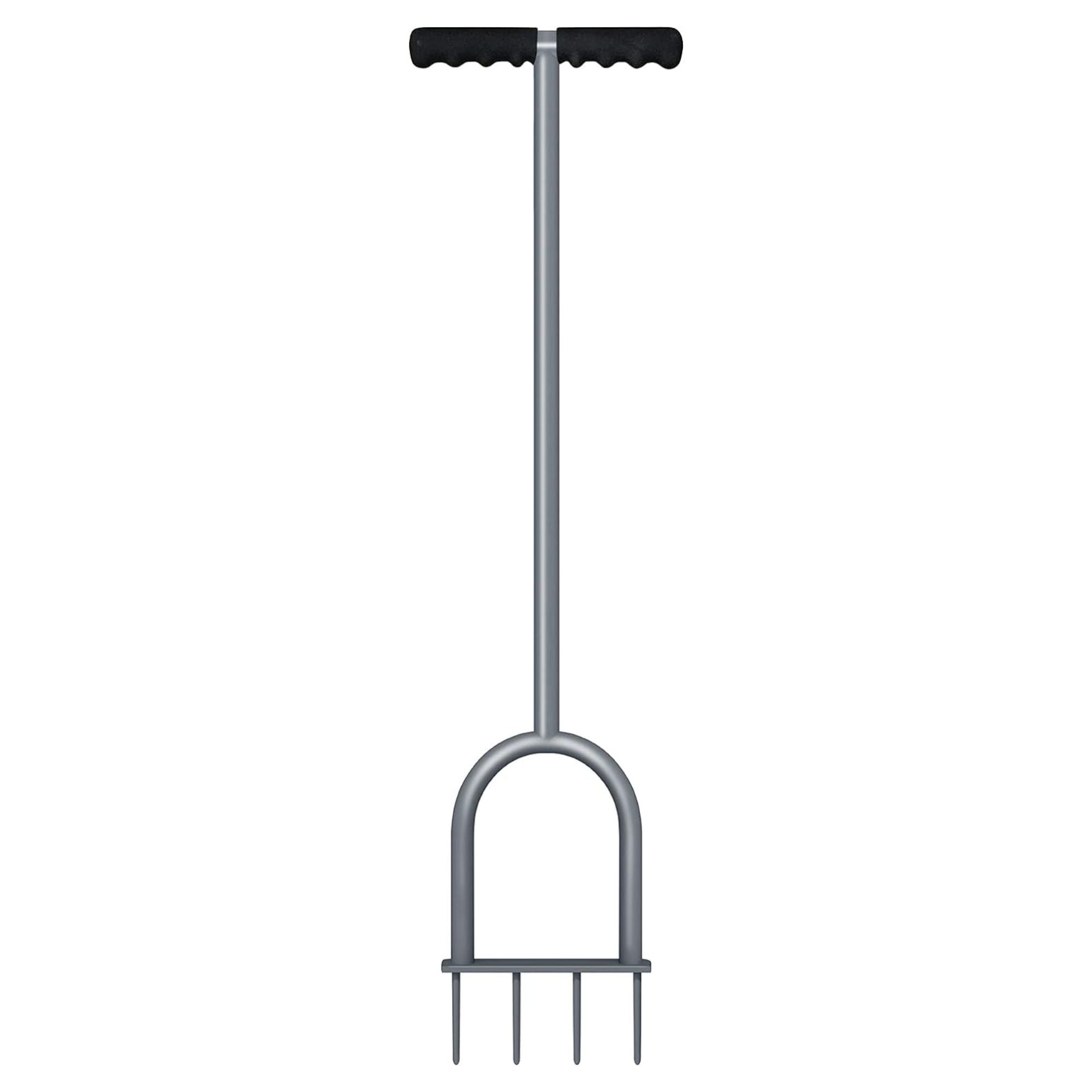How to get rid of leatherjackets to improve the look and health of your lawn this spring
And tips to prevent them from coming back


If you're here then chances are, you're trying to figure out how to get rid of leatherjackets. No, not the clothing item (although we understand the confusion) but rather those pesky critters that often run rampant in new-build gardens, in particular, causing damage to lawns.
If you've been hard at work to get your lawn ideas looking up to scratch for spring, there's one thing that'll throw a spanner in the works: a leatherjacket infestation. It's tricky enough to revive a lawn after winter and stay on the ball of maintaining a lawn during spring – but even harder work if you keep encountering mysterious yellow, thin, and bare patches of grass throughout your lawn.
If even after trying your hand at overseeding your lawn in an attempt to restore the health of the grass nothing changes, it's safe enough to suspect you've likely got a bigger issue at hand. So, what exactly do these pests do and what can you do to get rid of leatherjackets altogether?

How to get rid of leatherjackets
Before we work on rectifying the problem at hand, you must be able to identify leatherjackets first and foremost.
'Leatherjackets are the larvae of crane flies (otherwise known as daddy-long-legs) and damage lawns by eating grass roots under the surface,' begins Peter Chaloner, managing director of Cobra Garden Machinery. 'These critters can cause yellow or brown patches of grass and even kill sections of your lawn. The grubs are a greyish colour and have elongated, tubular bodies up to 30mm long.'

They're easy to spot if you lift the top layer of soil on your lawn. However, given how tenuous that task is, it's easier to spot signs of their presence if you suspect you've got an infestation.
'These include spongy patches where the grass is easy to pull up and if a flock of birds is concentrated on one area, it could be because they're eating on leatherjackets,' explains Josh Polhill, lawn expert and director of Polhill Garden Centre.
Sign up to our newsletter for style inspiration, real homes, project and garden advice and shopping know-how

As we mentioned earlier, leatherjackets are often a problem found more in new-builds, and Josh explains that it's because these gardens 'lack natural predators' as opposed to homes that have been standing for centuries. Therefore, it's up to the homeowners and tenants to take control of getting rid of leatherjackets.
Luckily, there are several ways you can try to get rid of leatherjackets from causing further damage to your garden.
1. Aeration
Firstly, one of the most effective ways to try and get rid of leatherjackets is to aerate your lawn. The good news is that if you haven't done it yet, April is a great time to aerate your lawn before repeating it again in early autumn.
It's key to keep your lawn aerated because leatherjackets typically thrive in damp environments. 'Usually, crane flies lay them on lawns and most of them never actually hatch. But, if there are favourable conditions and the lawn is wet for a very long time, they will hatch and begin to live in the grass,' explains Petar Ivanov, Fantastic Gardeners' gardening and plant expert.
So, providing your garden with proper drainage and scarifying your lawn so there are no damp conditions for leatherjackets to hatch is one step closer to solving this problem.
2. Encourage natural predators
As mentioned earlier, birds love to eat leatherjackets. More helpful critters include hedgehogs, moles, and beetles. Therefore, creating a wildlife garden by filling your garden with feeders and nesting boxes will ultimately help to get rid of leatherjackets in the long run. After all, who wouldn't want a hedgehog-friendly garden?
'If you have these creatures in your garden, you should consider them welcomed guests rather than pests if you are trying to prevent a leatherjacket infestation,' says Josh.

3. Nematodes
Another effective way of dealing with a leatherjacket infestation is to introduce beneficial nematodes, such as Steinernema feltiae, into your lawn. These are small worms that work to get rid of leatherjackets by killing them.
'These tiny organisms naturally seek out and parasitise leatherjacket larvae underground, effectively reducing their population without harming other beneficial insects or plants,' explains Josh. Better yet, nematodes make for a dog-friendly garden so your furry friends can still roam around freely with no risk.
'Applying nematodes is simple and should be done in spring and autumn when young leatherjacket larvae are present. Once the product has been delivered, pop it in the fridge until you’re ready to use it,' advises Matthew Martin, strategic account manager at Nemasys Beneficial Nematodes.

Nemasys' Biological Leatherjacket Killer contains the nematode species, Steinernema feltiae, a natural predator of leatherjackets. The nematodes enter the larvae through natural openings on the body and releases a bacterium inside the host which infects and kills the pest.
'The nematodes can be applied when the soil is consistently above 10 degrees and are best applied first thing in the morning or in the evening to avoid applying in direct sunlight as this weakens the nematodes.'
'When you're ready to apply, mix the contents with water as per the measurements on the back, into a watering can or suitable sprayer, if using a watering can make sure to apply with a coarse rose to prevent nematodes from getting stuck,' he continues.
When doing this method, it's important to keep your lawn thoroughly watered after the application and should be kept consistently moist for up to two weeks afterwards.
FAQs
How do I get rid of leatherjackets in my garden?
There are several ways to get rid of leatherjackets in the garden, including regularly aerating your lawn to improve drainage, encouraging birds or other natural predators to your garden, and deploying nematodes in your garden.
What kills leatherjackets?
An organic way to kill leatherjackets is by introducing nematodes, which are microscopic worms which can invade the bodies of and kill leatherjackets.
'Infected pests retreat beneath the ground and will then be consumed and broken down by the nematodes. Once the leatherjacket population has diminished, the nematodes will die off and return to the normal quantities found naturally in the soil,' explains Matthew Martin at Nemasys Beneficial Nematodes.
'Pesticides can be used as a last resort, but just remember to opt for environmentally friendly ones and try to use more ecologically sustainable methods first before you introduce these to your garden,' cautions Ryan Fowley pest removal expert and COO at Excel Pest Services.
Now, you should know how to get rid of leatherjackets and hopefully prevent them from causing havoc to your lawn once again with these expert tips. Here's to pest-free lawns we can enjoy this spring!

Jullia was Ideal Home’s Junior Writer from 2022-2024 and the Ideal Home Certified Expert in Training on Vacuums having spent over 60 hours testing different models. She’s always loved all things homes and interiors, graduating with a bachelor’s degree in Architectural Studies from the University of Nottingham where her love for writing blossomed following her internship at ArchDaily. Now focused on home tech and cleaning, Jullia works on writing features and explainers to help people make the most of their home appliance investments, putting the newest launches through their paces. When she isn’t writing, she loves exploring the city, coffee shop hopping, and losing hours to a cosy game or book.
